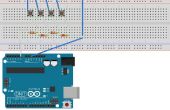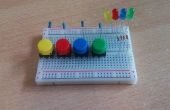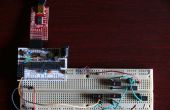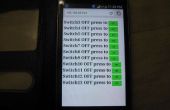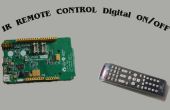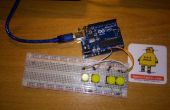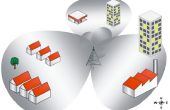Paso 2: El programa

Escribí esto en un nuevo modelo de frambuesa 2. Si está utilizando el modelo antiguo algunos recalibración será necesario. Los números de las declaraciones del caso tendrá que ser mayor. Comentario a la sentencia switch todo y sustituirlo temporalmente por
printf ("%ld\n", ButtonReading);
Esto hará más fácil encontrar los nuevos números si necesita volver a calibrar por cualquier razón.
Y debe funcionar si agregar o quitar botones.
Si intentas más de un botón en un momento se registrará sólo el botón numerado más alto.
Este programa contiene una nueva versión mejorada de la función RCtime() que utilicé en este instructivo:
/*********************************************************************** * Filename: Switches.c * This program demonstrates a way to simulate an analog read by measuring * the time it takes to charge a capacitor through a resistance. It uses * resistors in series and buttons between them. ***********************************************************************/ #include <stdio.h> #include <stdlib.h> #include <unistd.h> #include <wiringPi.h> int ButtonPin = 0; // Resistors in series and capacitor connected to pin zero. /*********************************************************************** * RCtime() - Function, uses a digital pin to measure resistance by first * discharging capacitor then measuring the time it takes to charge the * capacitor through the resistance. When the voltage rises to Vcc/2 the * pin will go high. ***********************************************************************/ long RCtime(int RCpin) { pinMode(RCpin, OUTPUT); // Set pin to output, digitalWrite(RCpin, LOW); // and pull to low. delay(4); // Allow time to let capacitor discharge. long time = micros(); pinMode(RCpin, INPUT); // Now set the pin to an input, pullUpDnControl(RCpin, PUD_OFF); // turn off internal pull down resistor, while (digitalRead(RCpin) == LOW); // and wait for it to go high. long PinVal = micros() - time; return PinVal; } /************************************************************************** * loop() - function runs in a continuous loop until program is stopped. **************************************************************************/ void loop(void) { long ButtonReading = RCtime(ButtonPin); // Read Buttons into ButtonReading. switch(ButtonReading) { case 6200 ... 8000: { printf("%ld - No button pressed.\n", ButtonReading); break; } case 5500 ... 6199: { printf("%ld - button one pressed.\n", ButtonReading); break; } case 4500 ... 5499: { printf("%ld - button two pressed.\n", ButtonReading); break; } case 3000 ... 4499: { printf("%ld - button three pressed.\n", ButtonReading); break; } case 2000 ... 2999: { printf("%ld - button four pressed.\n", ButtonReading); break; } case 1000 ... 1999: { printf("%ld - button five pressed.\n", ButtonReading); break; } } delay(100); } /*********************************************************************** * setup() - function is run by main() one time when the program starts. ***********************************************************************/ void setup(void) { wiringPiSetup(); // Required. RCtime(ButtonPin); // Throw out first reading. } /*********************************************************************** * main() - required ***********************************************************************/ int main(void) { setup(); while(1) { loop(); } } Descargar el programa y compilarlo con el comando:
gcc -o interruptores Switches.c - lwiringPi
Y ejecutar el programa con el comando:
sudo. / interruptores
